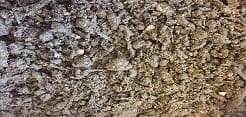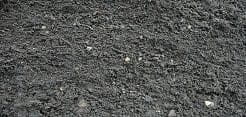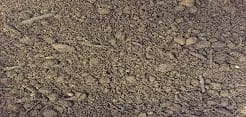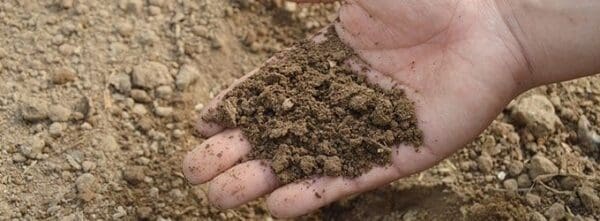Topsoil is one of the most important parts of your garden. It’s the base from which everything in your garden grows, as well as the bucket that waters it and the plate that feeds it. Topsoil, as the name suggests, is the upper most layer of soil that covers the majority of terra firma. It takes approximately 500 years for nature to generate just 3cm of topsoil, so it’s important that we look after the relatively limited supply that we currently have.



Quality topsoil contains the correct balance of nutrients that your garden needs, the correct PH balance to encourage life and the right amount of organic matter to feed and hold water for your plants. If any of these characteristics are out of line with what the plants in your garden need, you’re going to struggle to get your garden to flourish.
Identifying your topsoil
Before you can tell whether your topsoil is holding back your garden, you must first work out its composition. Your top coil can vary infinitely but we’re going to give you the information you need to be able to find out where your topsoil is lacking.
Soil composition
Your garden’s topsoil can be defined by the size of the particles it consists of. Soil consisting of small particles that can easily be balled together is called clay. As you might expect, clay is exceptionally good at holding water and can cause issues with drainage as the primary ingredient in your topsoil. Larger particles are sand and doesn’t hold water that well at all. A soil made primarily of sand will require regular watering during warm seasons. The ideal mixture of both of these ingredients in your soil is called Loam and it’s what you’re looking for to grow a great garden.
Soil Acidity
The acidity of your topsoil can vary greatly by the geography and topology of the surrounding area and you can easily test it with a home soil testing kit.
A very acidic soil of 5 or less allows plants vital nutrients to be readily dissolved by water and can therefore be easily washed away from roots. The high acidity of the soil also inhibits the decay and rot of organic material, preventing the natural return of nutrients back into the soil.
A highly alkali soil (pH of 8+), often identifiably by chalky white particles, limits the availability of phosphorus, iron and manganese, increasing the risk of certain diseases.
Fixing your Top Soil
The amount of work required to put your soil back into line depends on how damaged it is and the desired perfect soil for your garden plants. Both clay and sand rich soils can be slowly but surely turned to loam by introducing organic material like our compost.
However, large areas of poor soil can be very difficult to improve and will often revert to how they started. It’s faster and cheaper to remove the offending topsoil and replace with high quality soil that fits your required composition levels and will last much longer with regular care.
